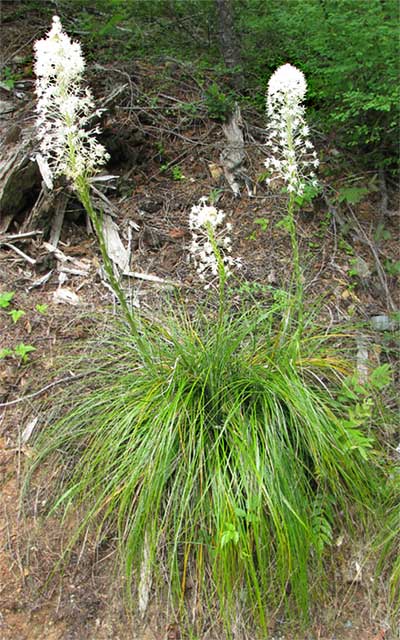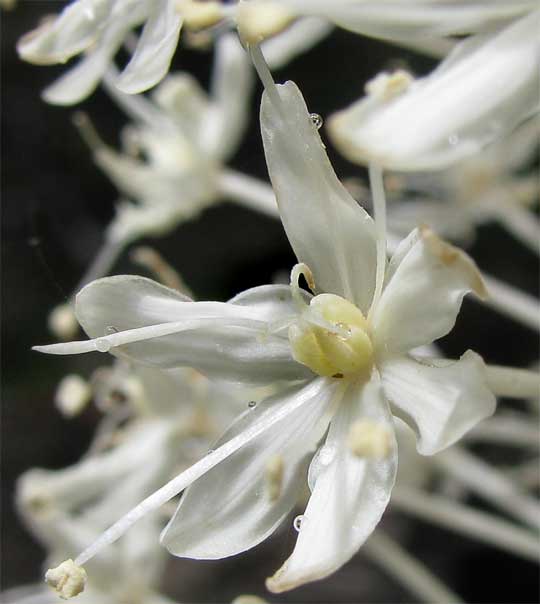Excerpts from Jim Conrad's
Naturalist Newsletter
from the June 27, 2009 Newsletter, issued from the Siskiyou Mountains west of Grants Pass, Oregon:
BEAR GRASS BLOSSOMING
In moist valleys at around 4000 feet the most eye- catching flowering plant these days is certainly the five-ft-high, yard-long-leafed "clumpgrass" shown below:

Of course bearing such flowers it's not a grass at all but rather a species usually assigned to the Lily Family. It's XEROPHYLLUM TENAX, so impressive that it bears any number of English names, including Bear Grass, Squaw Grass, Soap Grass, Quip-Quip, Indian Basket Grass and Western Turkeybeard. A close-up showing its onion-flower-like blossoms is below:

Among the blossoms' distinguishing features are its six petal-like tepals, six stamens, the three curved styles atop the three-grooved ovary and the way the pollen-bearing, baglike anthers open away from the ovary (they're "extrorse" as opposed to "introrse"). The flower clusters' rounded heads are unusual, for usually such flower spikes are pointy at the top.
What an impression these large lilies make with their white flower heads hovering like ghosts in somber, misty valleys full of cold wind and with foggy showers sweeping through them!
To indigenous Americans of the past they must have been even more impressive, for they wove Bear Grass's fibrous leaves into mats and baskets. The leaves turn from green to white as they dry, are tough, durable, and easily dyed and manipulated into tight, waterproof weaves.
One feature accounting for the plant's success here is its set of adaptations for fire. After a fire it resprouts from rhizomes, often being the first plant to sprout in a scorched area.
Bear Grass is distributed from British Columbia south to California and east to Wyoming, in subalpine meadows and coastal mountains, and also at lower elevations in the California coastal fog belt.